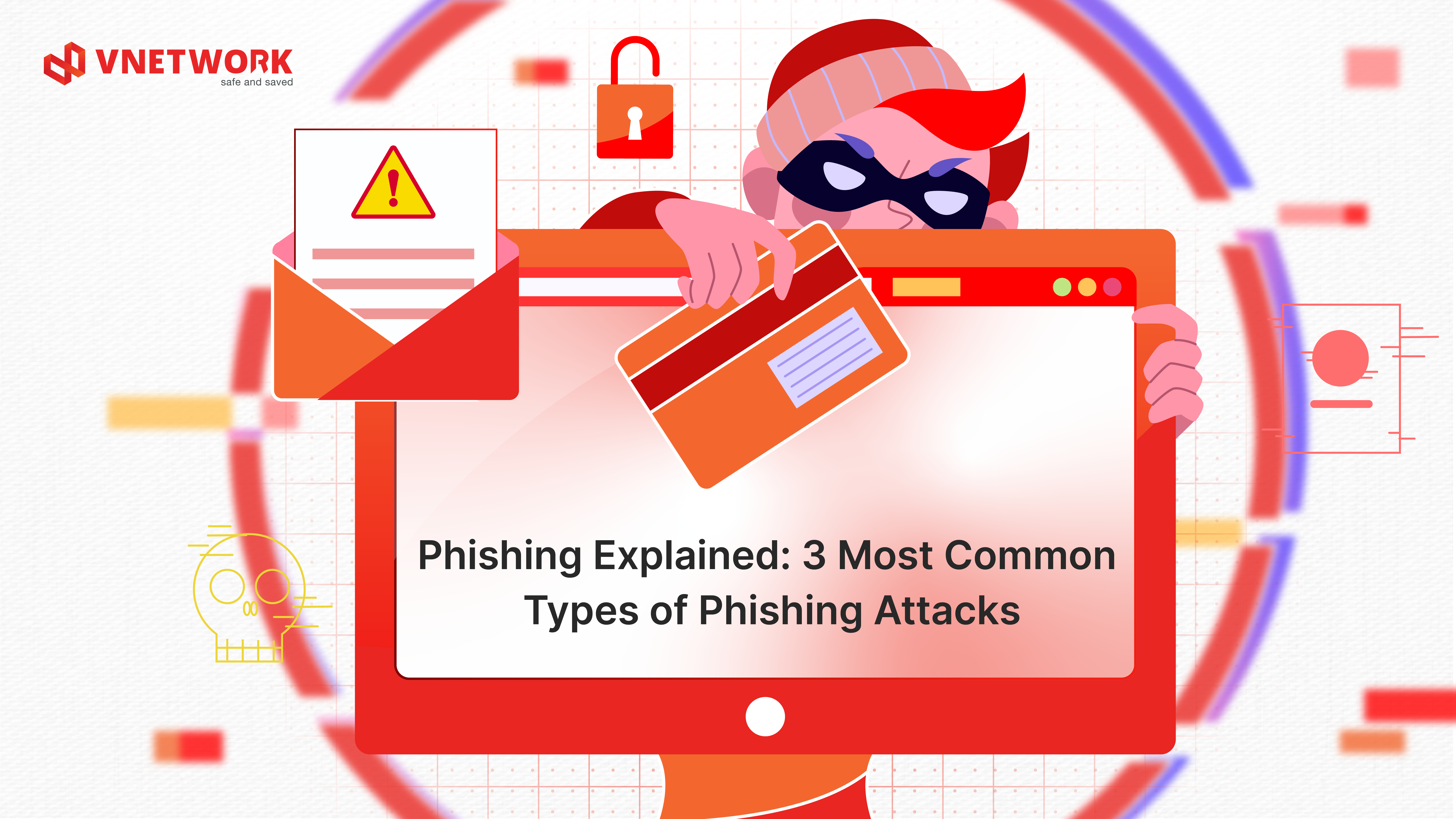1. What Is Phishing?
Phishing is a cyberattack that aims to steal sensitive information such as usernames, passwords, OTPs, or financial data.
Hackers impersonate trusted entities (banks, service providers, internal management...) to trick users into revealing information or clicking malicious links.
According to IBM X-Force Threat Intelligence Index, 91% of modern cyberattacks begin with phishing emails.
This method is often the gateway to more complex attacks like ransomware, BEC, or APT.
2. The 3 Most Common Phishing Attacks Today

2.1. Spear Phishing – Targeted Deception
Targets specific individuals or organizations (accountants, finance managers, IT staff…)
Hackers gather intel from social media, old emails, or leaked data
They send spoofed emails urging urgent action (e.g., transfer funds, open files...)
Example:
- Hacker impersonates the CEO with an email like: ceo@vnetw0rk.com
This method is also known as Business Email Compromise (BEC), causing billions of USD in losses annually.
2.2. Event-based Phishing & Social Engineering
Exploits trending events like COVID-19, natural disasters, shopping holidays, or large-scale recruitment.
Sends urgent fake emails to trick recipients.
Example:
Emails claiming “Emergency medical support” during the pandemic
Fake Apple notifications requesting account updates
Often uses shortened URLs (bit.ly, tinyurl...) to hide malicious links.
2.3. Financially Motivated Attacks – Phishing Leading To Ransomware
Hackers aim for financial gain through unauthorized access and data encryption.
Real-life scenario:
- A company’s accounting files on Google Drive were encrypted
- Hacker demanded a $200,000 ransom
Attackers may reuse login credentials to break into other platforms (Facebook, Gmail...)
3. Emerging Phishing Trends In 2025
AI-generated phishing: Emails written by AI, or even Deepfake voice calls
Quishing (QR Code Phishing): Fake QR codes in restaurants, events, invoices...
SaaS-based phishing: Attacks targeting users of Google Workspace, Notion, Microsoft Teams...

Learn about enterprise email security solutions with cutting-edge AI technology.
4. How Businesses Can Effectively Prevent Phishing
Employee awareness training:
- Run periodic information security courses and phishing recognition sessions
Email authentication using SPF, DKIM, DMARC:
- Implement DNS records to verify email senders and prevent spoofing
VNETWORK’s EG-Platform Email Security Solution:
- Detect spoofed emails and lookalike domains
- Block zero-day malware, ransomware, and APTs
- Analyze sender behavior and reputation
- Outbound email control to prevent data leaks
- 24/7 SOC Monitoring: Early-warning systems to help respond quickly to incidents
5. Conclusion
Phishing remains a top cybersecurity threat in the digital era. With increasingly sophisticated tactics, phishing emails are becoming harder to detect.
Investing in intelligent email security and raising user awareness is key to enabling businesses to proactively defend and safeguard their digital assets. Contact VNETWORK for a free consultation on the international-standard EG-Platform email protection solution.
